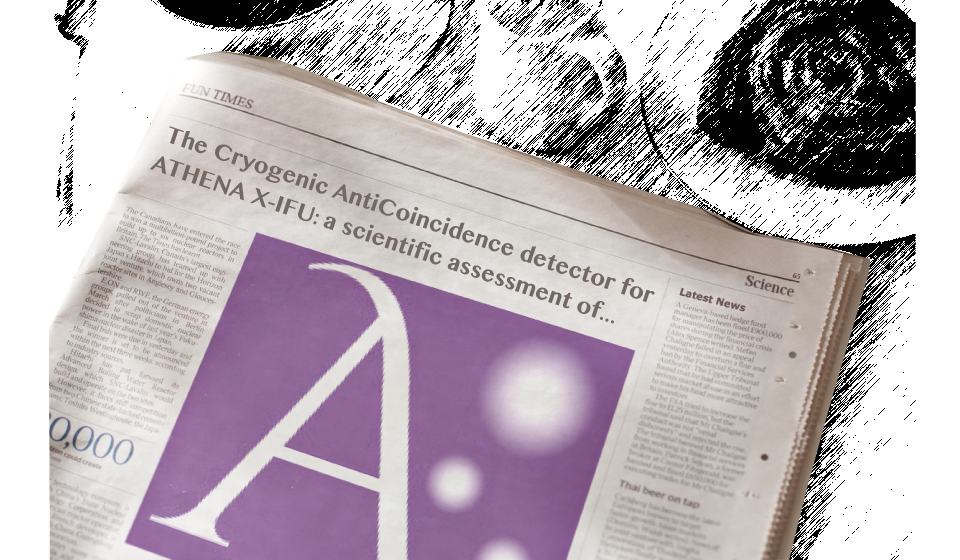
The Cryogenic AntiCoincidence detector for Athena/X-IFU

By M. D'Andrea
Abstract: "ATHENA is a large X-ray observatory, planned to be launched by ESA in 2028 towards an L2 orbit. One of the two instruments of the payload is the X-IFU: a cryogenic spectrometer based on a large array of TES microcalorimeters, able to perform integral field spectrography in the 0.2–12 keV band (2.5 eV FWHM at 6 keV). The X-IFU sensitivity is highly degraded by the particle background expected in the L2 orbit, which is induced by primary protons of both galactic and solar origin, and mostly by secondary electrons. To reduce the particle background level and enable the mission science goals, the instrument incorporates a Cryogenic AntiCoincidence detector (CryoAC). It is a 4 pixel TES based detector, placed < 1 mm below the main array. In this paper we report a scientific assessment of the CryoAC observational capabilities in the hard X-ray band (E > 10 keV). The aim of the study has been to understand if the present detector design can be improved in order to enlarge the X-IFU scientific capability on an energy band wider than the TES array. This is beyond the CryoAC baseline, being this instrument aimed to operate as anticoincidence particle detector and not conceived to perform X-ray observations."

